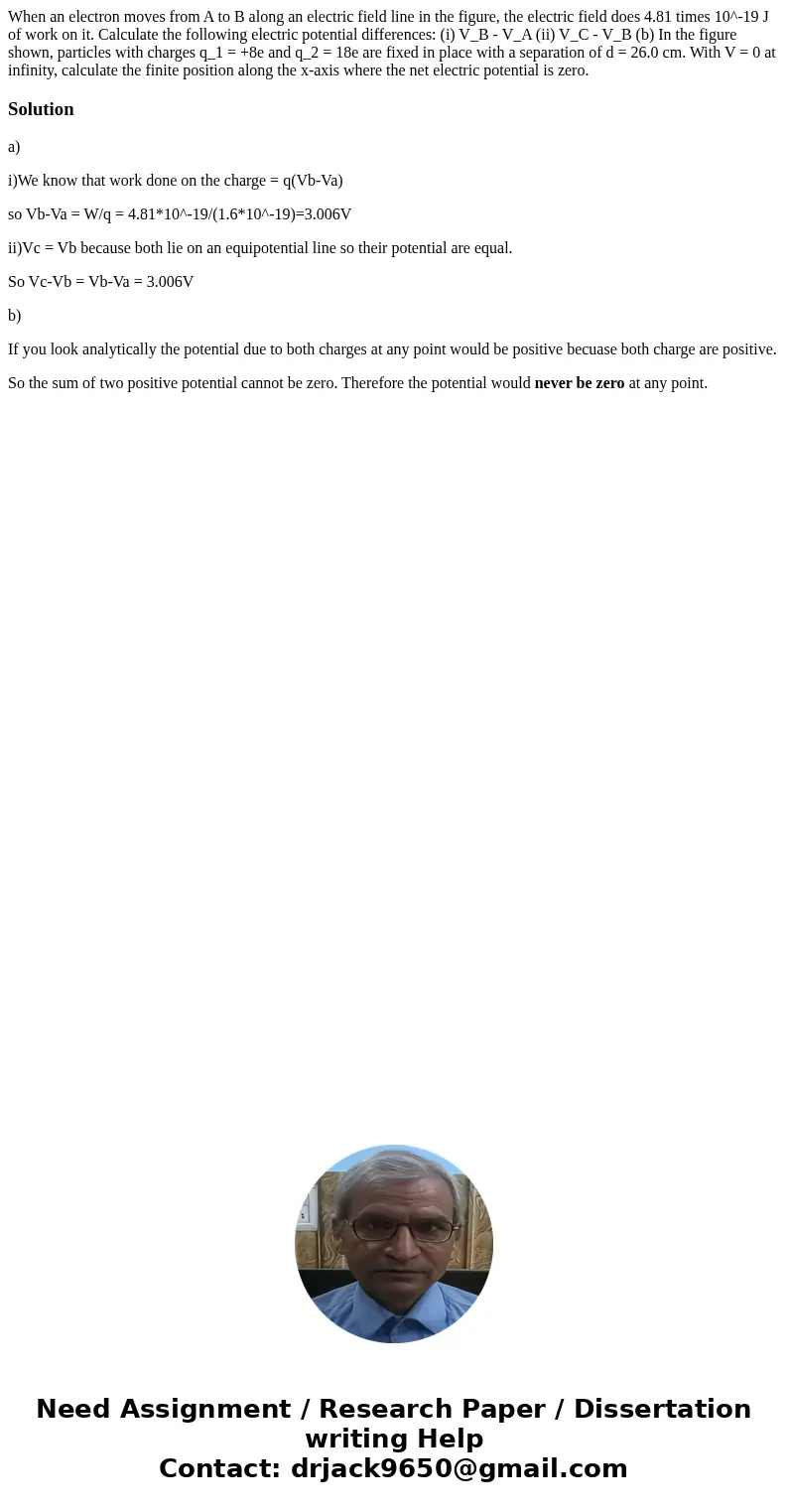When an electron moves from A to B along an electric field l
When an electron moves from A to B along an electric field line in the figure, the electric field does 4.81 times 10^-19 J of work on it. Calculate the following electric potential differences: (i) V_B - V_A (ii) V_C - V_B (b) In the figure shown, particles with charges q_1 = +8e and q_2 = 18e are fixed in place with a separation of d = 26.0 cm. With V = 0 at infinity, calculate the finite position along the x-axis where the net electric potential is zero. 
Solution
a)
i)We know that work done on the charge = q(Vb-Va)
so Vb-Va = W/q = 4.81*10^-19/(1.6*10^-19)=3.006V
ii)Vc = Vb because both lie on an equipotential line so their potential are equal.
So Vc-Vb = Vb-Va = 3.006V
b)
If you look analytically the potential due to both charges at any point would be positive becuase both charge are positive.
So the sum of two positive potential cannot be zero. Therefore the potential would never be zero at any point.

 Homework Sourse
Homework Sourse